Founder Story
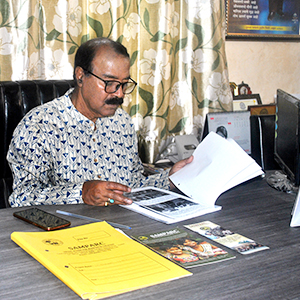
Founder’s Story: Shri Amitkumar Banerjee
A Life Dedicated to Children in Need
The story of SAMPARC is deeply rooted in the compassion and vision of its founder, Shri Amitkumar Banerjee, who has been working for the welfare of children since 1984. Through his early work, he realized that children from socially marginalized backgrounds—those born to sex workers, convicts, destitute families, or living on the streets—were completely neglected, with no support from the government or civil society.
Shri Banerjee firmly believed that children should not be judged or labelled based on the background they were born into. Whether a child is an orphan, abandoned, or from a stigmatized background, what they need most is love, security, care, and a nurturing environment to rebuild their lives. He strongly felt that children should be seen not through the lens of their past, but their potential for the future.
Inspired by the family-based SOS model of care, he envisioned a home where such children could grow up without discrimination, develop confidence, and live with dignity. With this mission, he founded SAMPARC (Social Action for Manpower Creation) in 1990, in a rented house in the village of Bhaje near Lonavala, Pune, alongside his colleague Mrs. Lata Pande, with whom he established the Society and Trust.
SAMPARC began its journey with just seven orphaned children. Today, more than 520 children, including orphans, children of sex workers, convicts, destitute and abandoned children, live under the safe and loving shelter of SAMPARC Balgram. These children are not seen as victims of their circumstances, but as valued members of society with rights, dignity, and aspirations.
They grow up with strong cultural, moral, and social values, receiving not just education but exposure to community life, traditions, and opportunities for personal growth. As a result, children raised in SAMPARC Balgram are confident, culturally grounded, and filled with self-esteem, ready to take on life with pride and purpose.
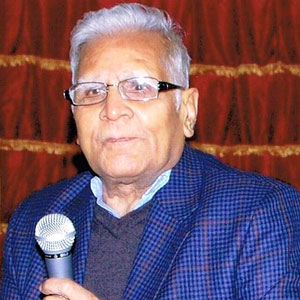
A Pillar of Support: Shri K.K. Singhvi, Senior Advocate – Supreme Court
Shri Amit Banerjee humbly considers himself a social worker rather than a founder, and attributes much of SAMPARC’s growth to the selfless guidance and leadership of Shri K.K. Singhvi, Senior Advocate, Supreme Court of India.
For 22 years, Shri Singhvi served as the President of SAMPARC, standing firmly beside Mr. Banerjee as a mentor and advisor. One of the most respected legal minds in the country, Shri Singhvi’s involvement brought not only credibility but also strategic direction to the organization. His unwavering support helped SAMPARC navigate critical challenges and expand its reach to serve more children in need.
His contribution was not just professional—it was deeply personal and compassionate. Shri Singhvi’s leadership remains one of the strongest pillars on which SAMPARC stands today.
- 35 YEARS
- 10,000 CHILDREN
- 10,000 WOMEN
- 11,000 YOUTH
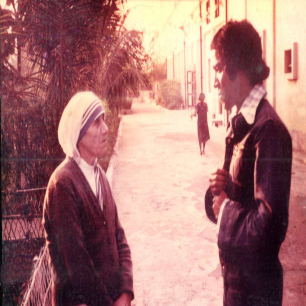
Founder’s Story: Shri Amitkumar Banerjee
From a Journalist’s Assignment to a Lifetime of Service for Children
The foundation of SAMPARC is deeply rooted in a life-changing experience that dates back to 1973, when Amitkumar Banerjee was a student at Bankura Christian College, West Bengal. Alongside his studies, he worked as a reporter for a local newspaper, Bankura Sanbad. One of his assignments led him to report on a tragic incident—a mother who, in desperation, sold her child to a brothel for a few kilograms of rice and a handful of coins. That moment shattered his perception of society and set him on a lifelong path dedicated to the upliftment of destitute and marginalized children.
A Calling Inspired by Mother Teresa
Mr. Banerjee’s early exposure to child care came through his fieldwork at Shishu Niketan, Mother Teresa’s institute in Ranchi. He was inspired to visit the Kolkata congregation with his professor, Fr. Barloeur S.J. While deep in prayer in the chapel, a hand rested gently on his head. It was Mother Teresa herself who asked, “My son, when will you go to Jesus?” To this, Mr. Banerjee instinctively responded, “I am sure my work will take me to Jesus.” That affirmation became his guiding force.
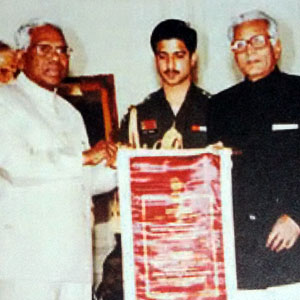
Academic & Grassroots Foundation
He completed his post-graduate studies in Rural Development at the Xavier Institute of Social Sciences (XISS), Ranchi, and went on to join Jayaprakash Narayan’s Sampoorna Kranti Movement. As part of the Bhoodan Movement, he worked in Gaya, Bihar, empowering landless labourers to reclaim their rights and dignity.
Recognizing his dedication, Mrs. Bilkees Latif, wife of then Maharashtra Governor Air Chief Marshal Idris Latif, invited him to Maharashtra to join the Children’s Village Program. He worked closely with her and her representative, Mrs. Nakhooda, for six years. Later, he became part of the SOS Children’s Village, where he embraced the idea that children flourish best in a family-like environment with foster mothers offering emotional care.
The Birth of SAMPARC – 1990
In 1990, Mr. Banerjee and his dedicated colleague, Mrs. Lata Pande, founded SAMPARC (Social Action for Manpower Creation). It began in a modest mud house near the Bhaje Caves, Lonavala, with seven orphaned children brought by social workers from Marathwada. The aim was clear: to give a new identity to children who had been neglected and stigmatized—orphans, children of sex workers, children of convicts, and those living on the streets.
Mr. Banerjee often says:
“These children should not be known for their past or background, but for who they are as individuals with dreams and potential.”
He believed that every child is a project, deserving focused attention in education, health, personality development, and vocational training to ensure they lead a life of self-respect and dignity.
A Vision Beyond Orphanages
Mr. Banerjee never believed that orphaned or abandoned children should live in isolation. Instead, they should be raised under a community umbrella, surrounded by social, cultural, and religious experiences—growing as part of society, not apart from it. He introduced the model of foster mothers in SAMPARC homes to provide psychological and emotional care in a family-like environment.
The number of children under SAMPARC's care soon grew from 7 to 46, and the organization expanded its efforts beyond child care. Pre-primary education programs were launched in 25 villages with support from CRY, while vocational training in welding, tailoring, and bamboo craft was introduced for school dropouts with help from IGSSS. A unique collaboration with Save the Children Canada educated over 200 cowherd children through primary education and skills training..
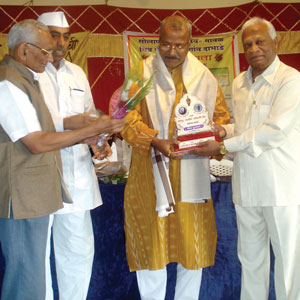
Expanding the Vision: Community Development
SAMPARC’s engagement with underprivileged communities led to new insights. Many children attending government schools lacked educational support and personality development. Thus, the Bal Bhavan program was initiated in six villages of Maval Taluka with Garware Bal Bhavan, Pune, supporting over 300 children.
With the help of K.C. Mahindra Education Trust, the Nanhi Kali Program was launched to promote girl child education in Maval and Mulshi Talukas. SAMPARC also undertook rural development projects—installing over 400 smokeless ovens and 250 low-cost toilets in 14 villages, improving hygiene and health conditions.
SAMPARC Becomes a Full-Fledged Children’s Home
By 1997, SAMPARC had established itself as a full-fledged children’s home on 4.5 acres of land near Lonavala, complete with playgrounds and community spaces. With generous support from Mrs. Lucilla Monti of Milan, Italy, Mr. Banerjee began developing SAMPARC at a national level.
Key contributors like Mr. K.K. Singhvi, Dr. Lalit Chokhani (current Trustee), and Mr. Ramesh Kacholia of Caring Friends played vital roles in SAMPARC’s expansion, along with international supporters such as Dr. Nico Nobel (Stichting Geron, Netherlands) and Mrs. Bonnie Christen (FDNF, Switzerland).
National Recognition & Continued Impact
On March 24, 1998, SAMPARC was honored with the National Child Welfare Award by the then President of India, Hon. K.R. Narayanan—a moment of immense pride and recognition for its outstanding contribution to child welfare.
SAMPARC was also granted 100% tax exemption (35AC certification) by the National Committee for Economic Development, Ministry of Finance. This enabled the construction of 10 residential homes, a community hall, a medical center, and office at the Bhaje campus to support 110 children.
Philosophy of Care & Protection
What sets SAMPARC apart is its discipline, focus on education, health, sports, emotional care, and the deeply personal attention each child receives. The entire staff ensures children feel safe, supported, and genuinely cared for, reinforcing their sense of belonging.
Mr. Banerjee believes:
“Homes for orphan children must not isolate them from society. They should live as part of the community, receiving every opportunity to grow like any other child.”
A Legacy of Compassion and Action
From a single news report in a small town in West Bengal to a nationally recognized institution impacting thousands of lives, Shri Amitkumar Banerjee’s journey is a testament to the power of one individual’s compassion and commitment. SAMPARC today stands not just as an NGO, but as a movement for social transformation, nurturing children and communities with love, dignity, and opportunity.

